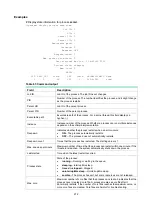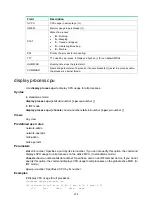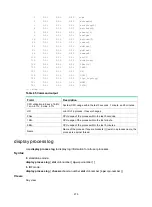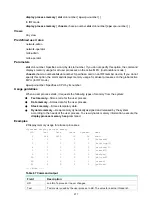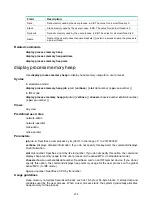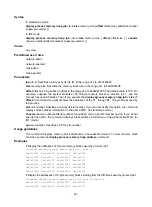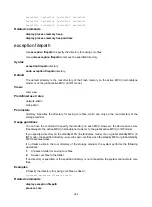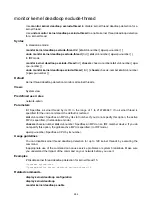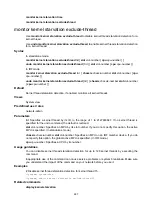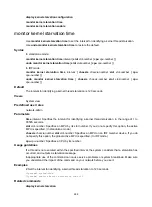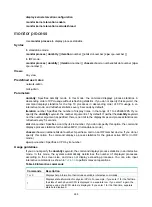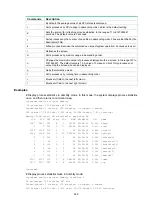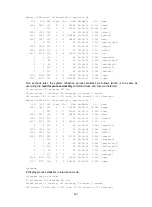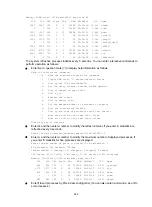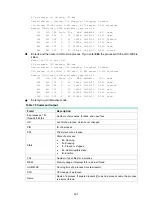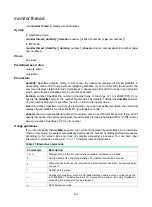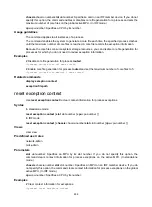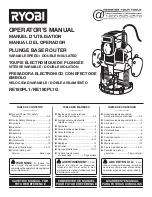
286
monitor kernel deadloop exclude-thread
monitor kernel starvation enable
Use
monitor kernel starvation enable
to enable kernel thread starvation detection.
Use
undo monitor kernel starvation enable
to disable kernel thread starvation detection.
Syntax
In standalone mode:
monitor kernel starvation enable
[
slot
slot-number
[
cpu
cpu-number
] ]
undo monitor kernel starvation enable
[
slot
slot-number
[
cpu
cpu-number
] ]
In IRF mode:
monitor kernel starvation enable
[
chassis
chassis-number
slot
slot-number
[
cpu
cpu-number
] ]
undo monitor kernel starvation enable
[
chassis
chassis-number
slot
slot-number
[
cpu
cpu-number
] ]
Default
Kernel thread starvation detection is disabled.
Views
System view
Predefined user roles
network-admin
Parameters
slot
slot-number
: Specifies an MPU by its slot number. If you do not specify this option, the active
MPU is specified. (In standalone mode.)
chassis
chassis-number
slot
slot-number
: Specifies an MPU on an IRF member device. If you do
not specify this option, the global active MPU is specified. (In IRF mode.)
cpu
cpu-number
: Specifies a CPU by its number.
Usage guidelines
Starvation occurs when a thread is unable to access shared resources.
The command enables the system to detect and report thread starvation. If a thread is not executed
within an interval, the system considers that a starvation has occurred, and outputs a starvation
message.
Thread starvation does not impact system operation. A starved thread can automatically run when
certain conditions are met.
Inappropriate use of the command can cause service problems or system breakdown. Make sure
you understand the impact of the command on your network before you use it.
Examples
# Enable kernel thread starvation detection.
<Sysname> system-view
[Sysname] monitor kernel starvation enable
Related commands
display kernel starvation configuration
display kernel starvation

